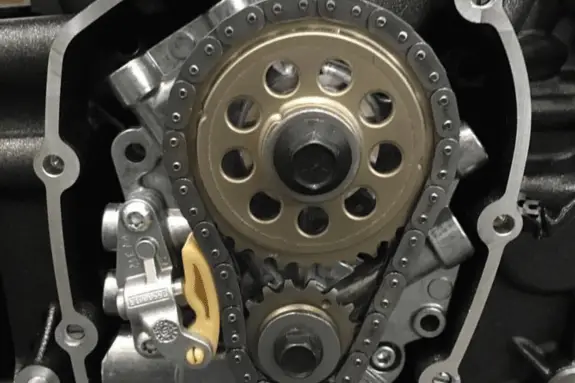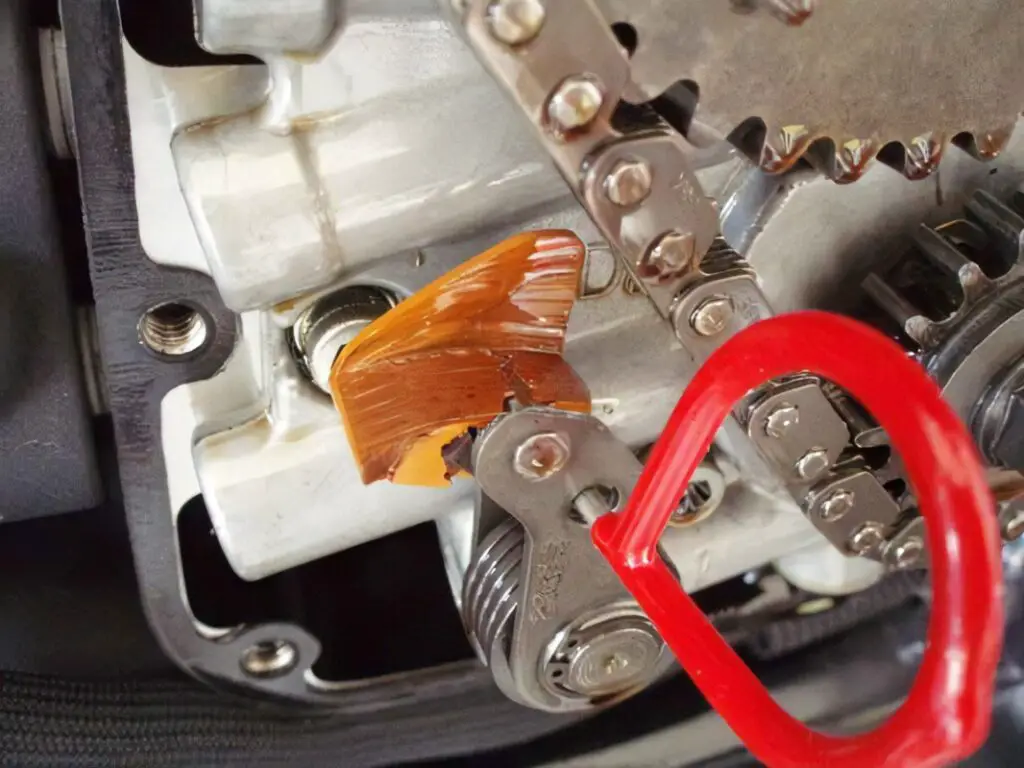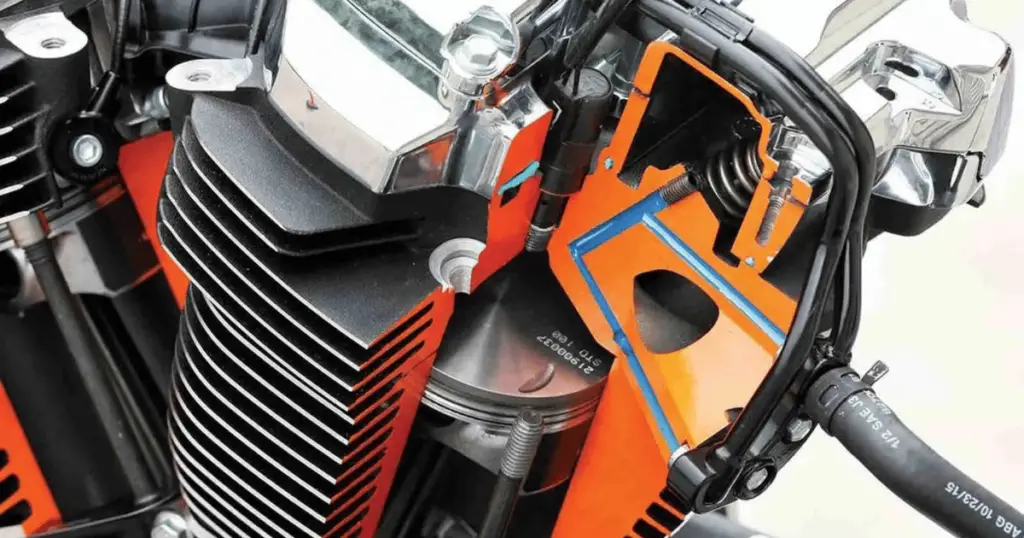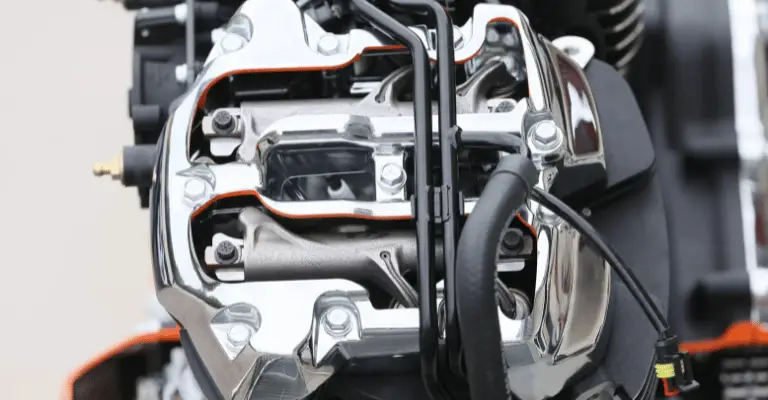When it comes to the endless debate of Twin Cam vs Milwaukee 8 motorcycle engines, even seasoned riders are left scratching their helmets. Often referred to as the Twin Cam vs M8 standoff, this battle of the Harleys continues to rev through the biking community with no signs of stopping. But fret not, biking compadre. Like a trusty mechanic with a well-oiled wrench, we’re here to break down this Harley motor showdown in a way that even a rookie could understand.
From the torque sweet spots to hearing the growl beneath you, let’s dive into the intricacies and performance grades of the Twin Cam and Milwaukee Eight engines – ensuring you make the right ‘ride-or-die’ choice. So, kick start your engines and get ready to journey through the rumblings and roars of these mechanical beasts on a quest to discover which Harley heart truly beats supreme.
Broadening the discussion: Evo vs Twin Cam vs Milwaukee 8: Analyzing These Engines
When Was The Harley Twin Cam First Introduced?
The Twin Cam was first introduced by Harley Davidson in 1999. It was initially developed for the company’s Dyna family of motorcycles and later expanded to other models.
Dyna related:
> Dyna vs Sportster: Which Is Better and Where?
> Dyna Vs Softail: What’s The Difference?
What Were The Twin Cam’s Defining Characteristics?
The Twin Cam engine was a significant evolution in Harley’s motor lineup, featuring a design with two cams, hence its name. It offered increased power and torque compared to its predecessors. This engine was available in several displacements over the years, including 88 cubic inches (1,450cc), 96 cubic inches (1,584cc), 103 cubic inches (1,690cc), and 110 cubic inches (1,802cc).
Related:
– Finding Best Oil for Harley Davidson Twin Cam Engines (Guide)
– Best Spark Plugs for Harley Davidson Twin Cam: Full Guide
What’s The Benefit To Two Cams?
The key advantage of having two cams in an engine is that it allows for more effective valve timing. The dual cam design allows for separate camshafts for the intake and exhaust valves, resulting in more power, more torque, and better fuel efficiency – not to mention that signature exhaust note and Harley feel.
Read more:
> Twin Cam 88 vs 96: Dual Cam Shootout (What’s Better?)
> Harley 88 vs 107: An In-Depth Comparison
> Harley 103 vs 117: The Ultimate Comparison (Who Wins?)
Did It Have Its Down Falls?
Like any mechanical design, the Twin Cammed motor was not without its shortcomings. Some riders reported issues with the engine’s durability and longevity, particularly in the cam chain tensioner system. The Twin also had a reputation for running hot, which could lead to discomfort for the rider during extended rides.
Related: What Harley Twin Cam Years To Avoid: An Exhaustive Guide

How Reliable Is The Twin Cam Motor?
Despite some reported issues, the Twin Cams have proven to be reliable overall. With regular maintenance and care, many riders have reported excellent longevity and performance from their Twin Cam engines.
Related:
> Is The Twin Cam 88 A Good Motor? Yes and No (Here’s Why)
> Best Cam for 88 Cubic Inch Harley Revealed (+Buying Guide)
> Is The Twin Cam 96 A Good Motor? Yes and No (Here’s Why)
> Is The Harley 103 A Good Engine? Yes and No (Here’s Why)
Were There Recalls For The Twin Cam?
Over the years, Harley Davidson issued several recalls related to the Twin Cam engine for various reasons, including potential problems with the clutch master cylinder and the fuel system.

Which Bikes Had A Twin Cam Motor?
The engine was used in a wide range of Harley Davidson motorcycles, including the Dyna, Softail, CVO, and Touring models. The Twin can also be found in the early trike models.
More Twin Cam: Best Year Harley Twin Cam Engine: A Surprising Overview
What Year Did The Harley M8 Come Out?
In 2016, Harley Davidson introduced a new engine model, known as the Milwaukee Eight or M8. This engine was designed as the successor to the Twin Cam and represents a significant evolution in Harley’s engine technology.

How Is The Milwaukee 8 Different From The Twin Cam?
The Milwaukee Eight is quite different from the Twin Cam in several ways. First and foremost, it features a single, four-valve cylinder head design with a higher compression ratio, compared to the Twin Cam’s two-valve design. This results in improved airflow and combustion efficiency. The M8 also features a single, chain-driven camshaft, which reduces mechanical complexity and noise.
More comparison: Harley’s Twin Cam vs Evo: Who Reigns Supreme? (Revealed)
How Does Eight Valves Compare to Four?
The use of eight valves in the M8 engine offers several performance advantages over the Twin Cam’s four-valve design. The eight valves provide improved intake and exhaust flow capacity, resulting in higher power and torque output. The M8’s valve train also requires no adjustment, with valve lash set at the factory for life.

Milwaukee 8 Baseline Performance Compared to The Twin Cam
On a performance basis, the Milwaukee Eight engine has shown to offer substantial improvements over the Twin Cam. The M8 produces approximately 10% more torque than the Twin Cam and offers quicker acceleration. In addition to this, the M8 offers improved fuel economy, up to 11% better than the Twin Cam, depending on the model and displacement.
But this certainly helps too: The Best Tuner For Milwaukee 8 114 Engines (+Alternatives)
How Reliable Is The Milwaukee 8?
In terms of reliability, the Milwaukee Eight engine series has demonstrated excellent performance. The use of a single, chain-driven camshaft has reduced mechanical complexity, which can contribute to improved longevity. The M8 also features an improved cooling system, which helps manage engine heat and enhances rider comfort.
Related reads:
– Harley M8 Oil Capacity Guide (All Sizes Explained)
– Harley M8 Primary Oil Capacity (All Engine Sizes Explained)
– The Best Oil for M8 Harley Engines Gets Revealed (Complete)
Were There Any Recalls?
As of this writing, there have been a few recalls related to the Milwaukee Eight engine, mostly related to oil and fuel leaks. However, these issues have been addressed by Harley Davidson, and the overall reliability of the M8 remains high.
Related: Is The Harley 114 A Good Engine? Yes and No (Here’s Why)
What Bikes Utilize The Milwaukee 8 Engine?
The Milwaukee Eight engine is used in all of Harley Davidson’s current Softail and Touring models. This includes the Street Glide, Road Glide, Electra Glide, and the Softail lineup in addition to the latest series of trike models.
More Milwaukee:
> Harley 107 vs 114: Milwaukee 8 Worth The Hype? Yes and No
> Harley 107 vs 114 vs 117: A Milwaukee Bound Shootout
So Which Engine Is Better? (It Depends)
In the debate between the Twin Cam vs Milwaukee 8, the answer really depends on what you value most in a motorcycle engine. If you prefer a proven, time-tested design with a raw, mechanical feel, the Twin Cam may be the engine for you. On the other hand, if you value cutting-edge technology, improved performance, and advanced features, the Milwaukee Eight likely holds the edge.
Performance Comparison
When comparing the performance of the Twin Cam vs Milwaukee 8, the Milwaukee Eight engines have a clear advantage. With its increased torque output and quicker acceleration, the M8 offers a more exhilarating riding experience. However, many riders still appreciate the raw power and character of the Twin Cam, making it a matter of personal preference.
- Torque and Acceleration: The M8 engine produces approximately 10% more torque than the Twin. This results in quicker acceleration, offering a more exhilarating riding experience.
- Efficiency: The M8 is noted to have better fuel economy, being up to 11% more efficient than the Twin, depending on the model and displacement. Aside from fuel economy efficiency, the M8 utilizes liquid cooled cylinder heads which allow for more power, and a more efficient cooling process to compensate.
- Valve Design: The M8’s use of eight valves (four Valve Cylinder Heads) compared to the Twin Cam’s four valves (two valves in the cylinder heads) leads to improved intake and exhaust flow capacity, providing more power and a larger torque output.
Reliability Comparison
In terms of reliability, both engines have demonstrated excellent performance with proper care and maintenance. However, the M8’s reduced mechanical complexity and improved cooling system may give it a slight edge in terms of long-term durability.
Basically, whether you prefer the Twin Cam or the Milwaukee 8 will largely depend on your personal preferences and riding style. Both engines offer unique advantages and represent important milestones in Harley Davidson’s legendary history of motor design.